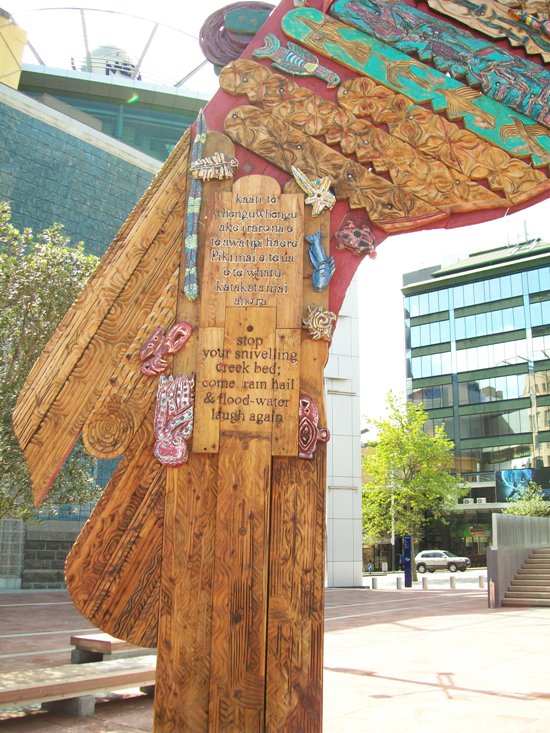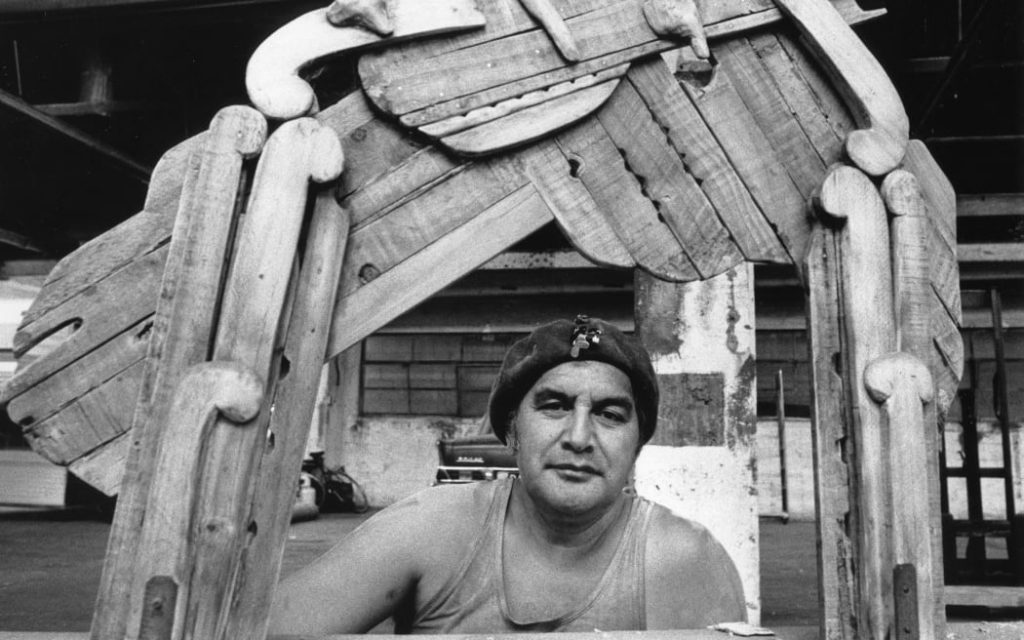The Hone Tuwhare Trust has been deeply saddened by the passing of Selwyn Muru and offer our love to the whanau and these words of love to our friend.
Selwyn had an enormous empathy for people of all walks of life and in all human situations. Joy and anguish, love and hate, tears and laughter. He had a personality without reserve and led a life sampled in all its paradoxes. In a 1984 interview with Katerina Mataira, Selwyn expressed that “art should cover the whole spectrum of human experience. It should reflect at one extreme the pain and anguish of people and pursue every mood they feel right through to their capacity for fun and frivolity”. He was an artist in all ways, his resonant voice was tuned to waiata, whaikorero and dramatic performance. Musical instruments were explored with comfortable abandon, and he composed songs, plays and poetry. But it was his creative talent in the visual arts where he made his strongest statements about life. Hone Tuwhare and Selwyn Muru were contemporaries, mates, northern relations, hoa aroha. One of Selwyn’s well known and loved works is his waharoa in Aotea Square in Tamaki Makaurau, which features one of Hone’s well known and loved Haiku poems. Tuwhare’s Haiku was both a tribute to his friend Selwyn and a reference to the Horotiu awa that once ran through the middle of the city.
Travel well e Murupaenga. Your work provoked tears and laughter, you are a continuing source of inspiration and your contribution to the world is a taonga for us all. Laugh again e hoa. Arohanui, The Hone Tuwhare Trust.


